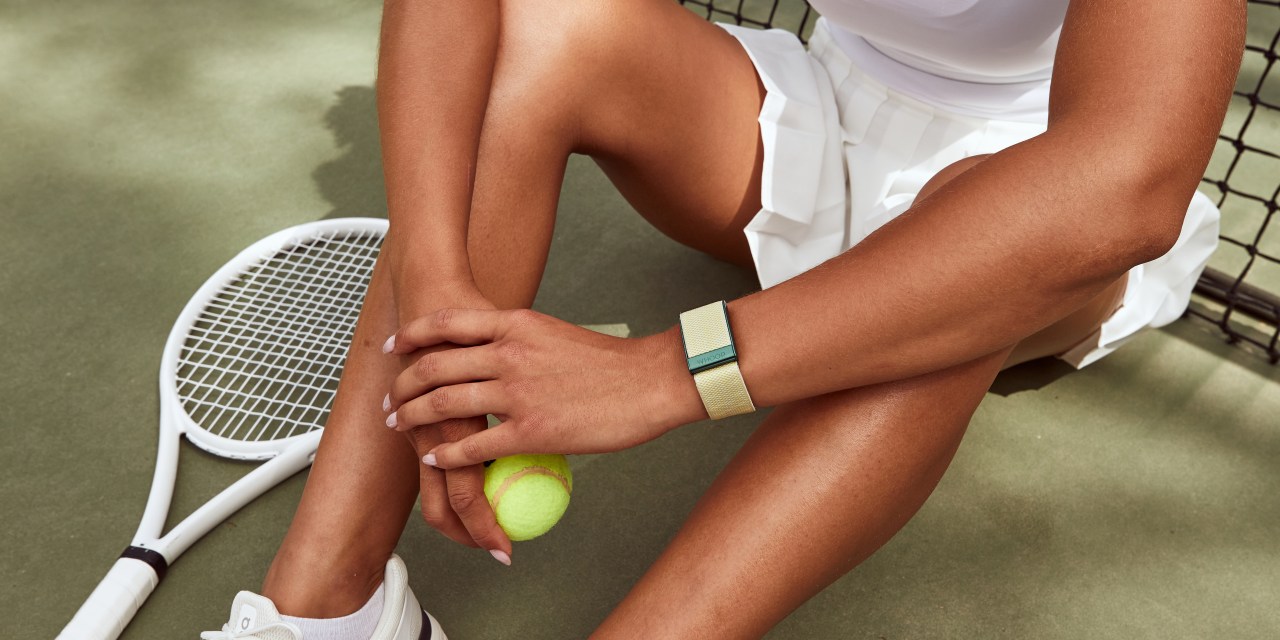Wearable tech company Whoop jumps into wholesale with Best Buy and Dick’s Sporting Goods

Whoop, best known for its wearable fitness tracker, is making its first foray into brick-and-mortar wholesale through partnerships with Best Buy and Dick’s Sporting Goods.
The company’s fitness tracker, battery pack and accessory bands are now available at 250 locations nationwide across both partners, including Dick’s subsidiaries of Golf Galaxy, Public Lands and House of Sports. Best Buy and Dick’s will also carry Whoop products on their websites.
Whoop’s jump into physical retail is the latest move in its quest for growth. The company, which was founded in 2012, already sells products through its website, as well as through a business-to-business division called Whoop Unite that works with college athletic departments, clinicians and first responders, among others. Last August, Whoop raised $200 million in a Series F funding round that valued the brand at $3.6 billion. Its partnerships with Best Buy and Dick’s could boost its share of the global wearable market, which is expected to hit $145.5 billion in 2027, according to ResearchAndMarkets.com.
“As we think about how we can continue to connect with more consumers and meet them where they’re working, they’re living and they’re shopping, we thought this was a great time for us to pursue retail partnerships,” Radha Bennett, vice president of retail and wholesale at Whoop, told Modern Retail. “We really think about retail as helping us build out our omnichannel presence, where you could potentially learn about Whoop at Best Buy, and then you could go back to our website and get more information or vice versa.”
What does building out a retail strategy look like? Modern Retail took a closer look at how Whoop set up shop.
The product
Whoop markets itself as a 24/7 personalized fitness and health coach. Its trackers measure metrics including sleep duration and cardiovascular exertion, and then provide suggestions based off that data. Notably, the Whoop bands do not have a screen, unlike the Apple Watch.
To use the device, customers can download the mobile Whoop app, which provides users with a Sleep Coach, daily strain score and daily recovery score, among other offerings. It also measures vitals such as heart rate, skin temperature and blood oxygen and lets users export trends into a PDF that they can then share with a coach or physician.
Starting this month, users can toggle on the Pregnancy Coaching tool to receive a weekly report with personalized insights and recommendations, such as increasing hydration or rest. The assessment also tracks trends for the user’s resting heart rate and heart rate variability throughout their pregnancy.
Whoop relies on a membership tier model. It offers three options on its website — a monthly membership ($30/month), a 12-month membership ($300/year) and a 24-month membership ($480 up front). Whoop also offers a Whoop Pro membership for $12 a month.
The partners
When it came time for Whoop to expand into wholesale, Best Buy and Dick’s came to mind, Bennett said. “Best Buy is the leader in technology, Dick’s is the leader in sporting goods, and when we think about Whoop as a product, we really are at the intersection of technology, of sports, of lifestyle and health,” she explained.
Whoop also has a “strong demographic alignment” with both brands, Bennett added. And, “what’s really exciting for us is that they are household names within the United States.”
Together, Dick’s and Best Buy have nearly 2,000 stores across the U.S. Like other retailers, both have dealt with industry-wide hurdles such as shifting consumer preferences and high inflation. Dick’s reported $3.1 billion in net sales for the second quarter, up 38% since 2019 but down 5% from 2021. Best Buy’s second-quarter sales were down 12.1% year-on-year.
When it comes to future partnerships, Whoop is having “active discussions with domestic as well as international partners,” Bennett said.
The process
Bringing Whoop into retail was challenging but “incredibly exciting,” Bennett said.
For starters, Whoop worked with Best Buy and Dick’s to create signage and videos and set up product detail pages online. It also adjusted its packaging to make it “retail-ready,” Bennett explained. This necessitated adding graphics, details about the product and brand and creating universal product codes and “making sure that we are compliant from a legal perspective.”
Whoop’s accessories and bands come in sleek black packaging, with close-ups of the items. The 4.0 band lists everything customers can track on the side. For shoppers, Whoop wanted to “empower them with as much information as possible, off the bat, through the packaging,” Bennett said.
Additional perspective
Rebekah Kondrat, founder and managing partner at the consulting firm Rekon Retail, said that when breaking into wholesale, it’s key to think about where existing and new customers could be.
“Partnering with a Dick’s Sporting Goods when you are a fitness device is a really smart play, because you know that your customer exists there,” she said. “So that’s your more targeted audience.” For Best Buy, “you’re going to get some crossover… but you’re also going to get a second cohort of customer that is the, let’s call it, early adopter of technology.”
From a data perspective, companies have different types of sharing agreements with wholesale partners. But, for those able to collect those insights, they can be really critical to brands’ expansion strategies, Kondrat said. They can get a sense of “who is buying, who is interested in buying and potentially even who’s not buying and why,” she explained.
Currently, 1 out of 5 Americans use a smart watch or fitness tracker, according to Pew Research. Whoop wants to help grow that audience, no matter where they shop.
“I think about wearables similar to cell phones, when they first came out,” Bennett said. “That’s the direction I think wearables and Whoop can go in, where, at some point… every individual has a Whoop on their hand.”

